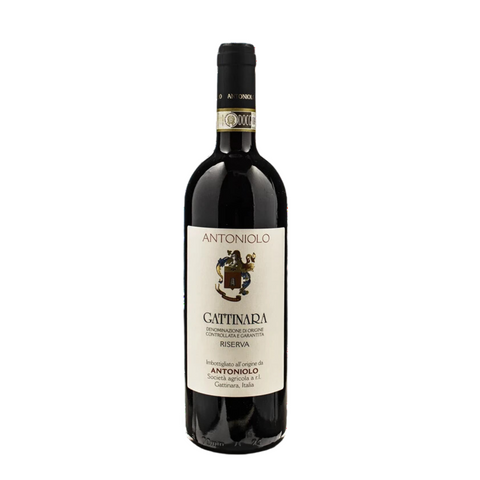
2020 Antoniolo Gattinara Riserva, Piedmont, Italy
The nose is dominated by dried violets, balsamic, earth, clay, strawberries and dried cherries. Full-bodied with ripe, velvety tannins, woven but chewy acidity and super-savory length.
There are 5 units left in stock.
ABOUT THIS WINE
100% Nebbiolo from estate vineyards. 50-60 year old vines planted to volcanic soils with south/southwest exposure. Spontaneous fermentation with maceration lasting 18 days; fermented in cement tank. Aged in 25-35HL Slavonian and French oak casks for 36 months. Aged one year in bottle prior to release.
ABOUT THIS PRODUCER
Antoniolo was established in 1948 and was the first producer to bottle cru wines in the small DOCG of Gattinara. Located in the Alpine foothills, it is well over an hour’s drive north of Barolo and Barbaresco. The Antoniolo family owns over 14 hectares of vineyards in five plots, and brother and sister team Alberto and Lorella Antoniolo now supervise every stage of winemaking under the watchful eye of their pioneering mother, Rosanna.
The Osso San Grato, San Francesco and Castelle vineyards yield selections and the standard Gattinara while Nebbiolo Juvenia and the Bricco Lorella rose come from the Borelle and Valferana vineyards. The “Osso” yields an imposing wine with structure and longevity, while “San Francesco” is the most delicate of the trio. Partly barrique-aged “Castelle” is a forward wine with ripe, pleasing fruit and rose petal aromas. Aging requirements are the same as those for the Barolo DOCG (three years, at least two in wood.) These wines are an excellent lower-priced, off-the-beaten alternative to Barolo or Barbaresco.
Vineyard Management: Integrated insect and disease control has been followed since 1995. No systemic plant protection products (products which act by systemic transport – through the sap of the plant) are used. Prevalence of sulphur and copper base products. No chemical fertilizers and no products against botrytis are used. Natural cover crops (grass cover) are left on the rows between the vines. After many years of these practices the vines (80% of the vines are over 30 years old) are much more resistant and are “balanced”. Very low doses of SO2 used in the wines.
